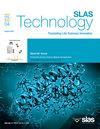2 型糖尿病患者连续血糖数据构建及糖尿病视网膜病变并发症风险评估应用。
IF 2.5
4区 医学
Q3 BIOCHEMICAL RESEARCH METHODS
引用次数: 0
摘要
糖尿病(DM)的管理包括达到可接受的血糖水平,并将糖尿病并发症的风险降至最低。适当的血糖检测方法是连续血糖监测(CGM)。可以实现反映血糖波动的有效评估指标。然而,与自我血糖监测(SMBG)相比,CGM 数据不易获得。因此,本文研究了一种融合模型来实现这一目标,包括高斯过程回归(GPR)和长短期记忆(LSTM)。与三种常用的 LSTM、GPR 和支持向量机相比,本文提出的模型可以构建精确的结果。利用构建的 CGM 数据,可以计算出血糖偏移的平均幅度(MAGE)、平均血糖(MBG)、标准偏差(SD)和范围内时间(TIR)等常规指标。这些指标和其他变量被输入统计方法,以实现糖尿病视网膜病变风险评估。这样,数学模型构建的 CGM 数据的血糖变异性与 DR 之间的关系就可以实现。使用的统计方法包括单因素分析和二元多元逻辑回归分析。结果显示,空腹血糖、病程、高血压病史、MAGE 和 TIR 是导致 DR 的独立风险因素。本文章由计算机程序翻译,如有差异,请以英文原文为准。
Continuous glucose data construction and risk assessment application of diabetic retinopathy complications for patients with type 2 diabetes mellitus
Managing diabetes mellitus (DM) includes achieving acceptable blood glucose levels and minimizing the risk of complications from DM. The appropriate glucose sensing method is continuous glucose monitoring (CGM). Effective evaluation metrics that reflect glucose fluctuations can be realized. However, compared with self-monitoring of blood glucose (SMBG), CGM data are not easy to obtain. Therefore, this article studies a fusion model to achieve this objective, including Gaussian process regression (GPR) and long short-term memory (LSTM). Compared with the three commonly used LSTM, GPR, and support vector machine, the proposed model can construct accurate results. By using the constructed CGM data, the conventional metrics, such as the mean amplitude of glycemic excursion (MAGE), mean blood glucose (MBG), standard deviation (SD), and time in range (TIR), are calculated. These metrics and other variables are input into statistical methods to realize diabetic retinopathy risk assessment. In this way, the relationship between the glycemic variability of the constructed CGM data by the mathematical model and DR could be achieved. The utilized statistical methods include single-factor analysis and binary multivariate logistic regression analysis. Results show that fasting blood glucose, disease course, history of hypertension, MAGE and TIR are independent risk factors for DR.
求助全文
通过发布文献求助,成功后即可免费获取论文全文。
去求助
来源期刊

SLAS Technology
Computer Science-Computer Science Applications
CiteScore
6.30
自引率
7.40%
发文量
47
审稿时长
106 days
期刊介绍:
SLAS Technology emphasizes scientific and technical advances that enable and improve life sciences research and development; drug-delivery; diagnostics; biomedical and molecular imaging; and personalized and precision medicine. This includes high-throughput and other laboratory automation technologies; micro/nanotechnologies; analytical, separation and quantitative techniques; synthetic chemistry and biology; informatics (data analysis, statistics, bio, genomic and chemoinformatics); and more.
 求助内容:
求助内容: 应助结果提醒方式:
应助结果提醒方式:


